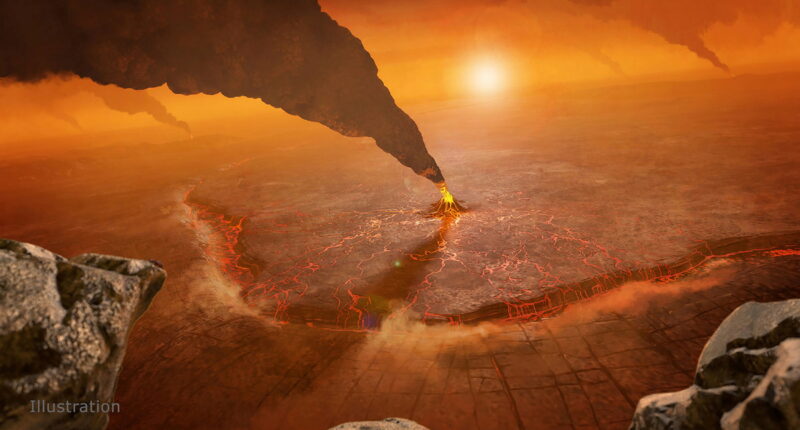SCIENTISTS believe that Venus may have a “squishy” outer shell, according to a shocking study.
Nasa researchers think that volcanos in regions called coronae on Venus could be making it lose heat.
And after looking at archival data, signs point to this geological activity ‘deforming’ the planet’s surface.
The research also provides insight into how planets like Earth may have had dynamic surfaces even before forming tectonic plates.
NASA’s Jet Propulsion Laboratory (JPL) explains: “Earth and Venus are rocky planets of about the same size and rock chemistry, so they should be losing their internal heat to space at about the same rate.
“How Earth loses its heat is well known, but Venus’ heat flow mechanism has been a mystery.
“A study that uses three-decade-old data from NASA’s Magellan mission has taken a new look at how Venus cools and found that thin regions of the planet’s uppermost layer may provide an answer.”
The study looked at observations the Magellan spacecraft made in the early 1990s of Venus’ coronae.
After making new measurements of coronae visible in the Magellan images, the researchers concluded that these regions tend to be located where the planet’s lithosphere is at its thinnest and most active.
“For so long we’ve been locked into this idea that Venus’ lithosphere is stagnant and thick, but our view is now evolving,” said Suzanne Smrekar, a senior research scientist at JPL in Southern California, who led the study published in Nature Geoscience.
Most read in Tech
The researchers focused on 65 previously unstudied coronae that are up to a few hundred miles across.
To calculate the thickness of the lithosphere surrounding them, they measured the depth of the trenches and ridges around each corona.
What they found is that ridges are spaced more closely together in areas where the lithosphere is more flexible, or elastic.
By applying a computer model of how an elastic lithosphere bends, they determined that, on average, the lithosphere around each corona is about 7 miles thick – much thinner than previous studies suggest.
These regions have an estimated heat flow that is greater than Earth’s average, suggesting that coronae are geologically active.
Suzanne Smrekar says: “While Venus doesn’t have Earth-style tectonics, these regions of thin lithosphere appear to be allowing significant amounts of heat to escape, similar to areas where new tectonic plates form on Earth’s seafloor.
“What’s interesting is that Venus provides a window into the past to help us better understand how Earth may have looked over 2.5 billion years ago. It’s in a state that is predicted to occur before a planet forms tectonic plates.”
Suzanne Smrekar is also the principal investigator of NASA’s forthcoming Venus Emissivity, Radio Science, InSAR, Topography, And Spectroscopy (VERITAS) mission.
VERITAS will pick up where Magellan left off, improving upon that mission’s data, which is low resolution and comes with large margins of error.
Targeting launch within a decade, the mission will use a state-of-the-art synthetic aperture radar to create 3D global maps and a near-infrared spectrometer to figure out what the surface is made of.
VERITAS will also measure the planet’s gravitational field to determine the structure of Venus’ interior. The instruments will together fill in the story of the planet’s past and present geologic processes.


“VERITAS will be an orbiting geologist, able to pinpoint where these active areas are, and better resolve local variations in lithospheric thickness. We’ll even be able to catch the lithosphere in the act of deforming,” said Smrekar.
“We’ll determine if volcanism really is making the lithosphere ‘squishy’ enough to lose as much heat as Earth, or if Venus has more mysteries in store.”









